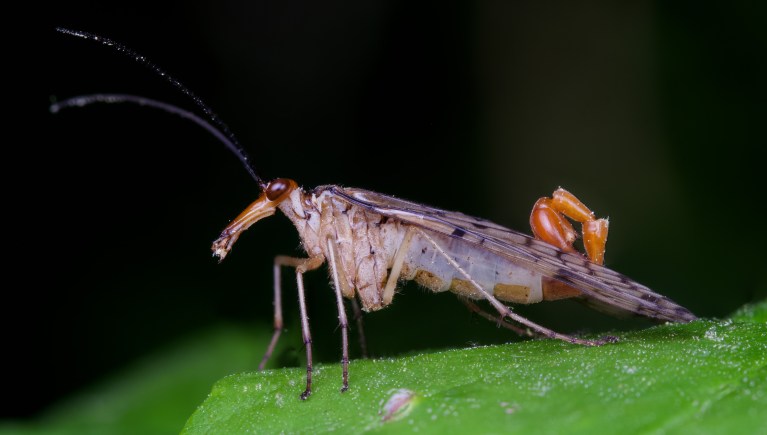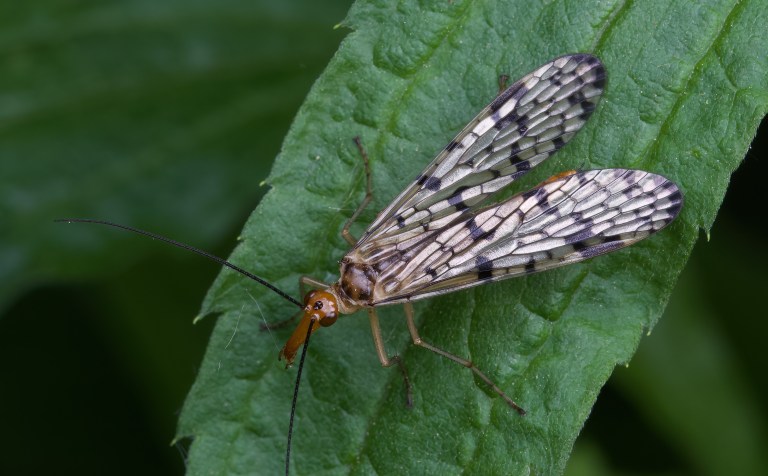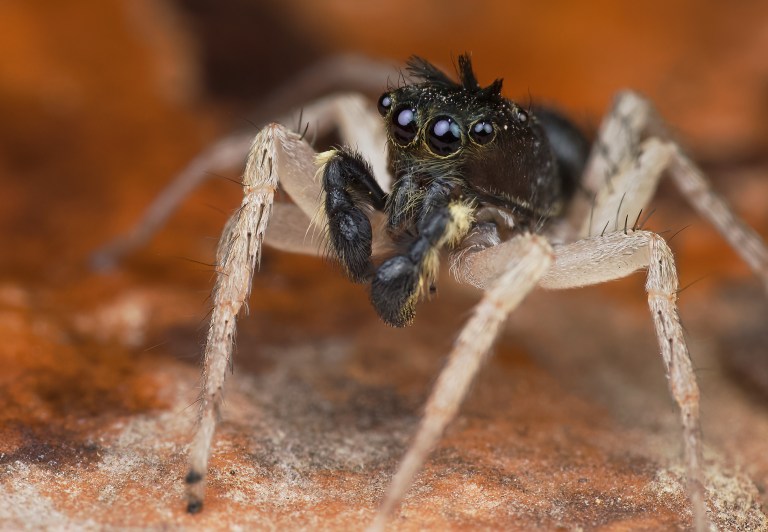Please send in your wildlife photos if you got ’em. Save Robert Lang’s Antarctic photos, I have little backup, and that would be disastrous. Thanks!
Today regular Mark Sturtevant gives us a passel of insect photos. His captions and IDs are indented, and you can enlarge the photos by clicking on them.
This post starts the pictures taken last season, but I am terribly behind in my post-processing so these were only recently made ready to share. It was another great year, and praise to the gods of light that my energy for going out as often as possible shows no sign of abating.
The pictures were taken either in or around my house, or from parks in eastern Michigan. I use an extremely worn out Canon t5i body (a consumer-grade crop sensor camera. Nothing fancy). Lenses include the Canon 100mm f/2.8L macro lens + a Raynox 250 diopter lens for extra power, and at times I use the Venus/Laowa 2.5-5x super macro lens, which is fully manual. My external flash is the Kuangren dual head flash with home-made diffusers. Readers can see all that on my odds-and-ends Flickr page if they like.
From an outing to an area park, here is an unknown caterpillar on Ash. I don’t yet have an ID:
Here is a small Dung Beetle with an interesting color. I suspect the genus Onthophagus:
A Soldier Beetle Podabrus flavicollis:
Next up are Scorpionflies (Panorpa sp), weird insects commonly seen on low foliage in forests. They are generally scavengers on dead insects. The scorpion-like tail is only seen in males, and it is simply their enormous genitalia. I stuck with this one for a long time, and he became quite used to me so I could get closer and closer:
As shown in the next picture, female Scorpionflies lack the impressive tail equipment:
A Cobweb Spider (Steatoda sp.) is shown in the next picture. This could be one of about two species in my area, but they are tricky to tell apart. I had inquired about its ID in a spider-centric Facebook group, and the resident experts weren’t sure of the ID either:
This set closes with an adorable Dimorphic Jumping Spider (Maevia inclemens). There were lots of these around the house last summer. This cute little male was fun to photograph in a staged session on the dining room table, and these are two closely cropped pictures of the little guy. Their common name reflects the fact that males come in two color forms. Some males are like this one, while others are pale all over but with orange markings. Those males therefore look more like females. I always have a soft heart for Dimorphic Jumper males since they are always moving around, bobbing their cute little pedipalps, and hoping with all their hearts that a female will signal back:
Thank you for looking!










Superb images and commentary.
Always great value! And jumping spiders really are cute, aren’t they?
These are always inspirational!
Thank you – these are wonderful. Scorpionflies are weird little dudes!
I am always excited by your photos Mark. It’s a world that is so hard to see except in these fantastic closeup photos. Insects are so small and seem to get away so quickly.
I never thought of insects having some kind of personality. Your interactions with them is wonderful and a world I have not been privy too until your photos.
Thank you!
Amazing clarity. Your pictures are a treat!
Thank you, everyone!
Really great images and informative text. I learn so much from each of your posts. Thanks!
Interesting that there are two colour morphs of male Dimorphic Jumping Spiders, one of which resembles the female colouration.
I wonder if this reflects a mating strategy in this species. In some vertebrates there are males which resemble females as well as those that don’t – the former obtain mating opportunities by sneaking them, essentially, rather than contending directly with the non-mimicking males, which tend to follow the more traditional male strategy of defending territories and sequestering females.
A bit difficult to see how spiders would pull this off, given how predatory the females are, but maybe someone more arachnologically accomplished than me could comment.
Thanks for the eye candy. Never seen a scorpionfly- Cool!